Mold Inspection San Antonio and Testing
We offer Mold Inspection Services in San Antonio , call us today!
Mold Testing San Antonio and Inspection
✅Call +12109813365. We are a full service mould inspection and testing company which provides mold assessments, mold inspections, mold testing services and prevention to help protect you and your family from toxic mold.
What is mold?
Mold or mould, also sometimes referred to as mildew, is a fungal growth that develops on wet materials. Call ✅Call (210) 981-3365. Mold is a natural part of the environment and plays an important part in nature by breaking down dead organic matter such as fallen leaves and dead trees; indoors, mold growth should be avoided.
Luckily, mold spores only form mold when they land on a moist surface. That means that if you can keep the interior of your home dry, you can avoid having any problems or mold issues. The best way to prevent mold in your home is to clean up spills, repair leaks in your roof, plumbing or HVAC system or air-conditioning system and make sure your kitchen and bathroom are properly venting moisture out of the house.
There are two major cleanup reasons for mold removal by a licensed water damage restoration or mold remediation business accredited by the bbb (read the bbb business profiles) of any mold growing in your house: mold damages the surface it is growing on and mold may aggravate allergies or asthma. You need mold remediation services to get rid of your mold.
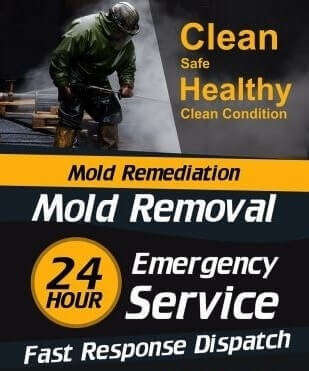
Why is mold bad?
Exposure to damp and moldy environments may cause a variety of safety and health and safety effects, or none at all. Some people are sensitive to molds. For these people, exposure to molds can lead to symptoms such as stuffy nose, wheezing, and red or itchy eyes, or skin. Some people, such as those with allergies to molds or with asthma, may have more intense reactions. Severe reactions may occur among workers exposed to large amounts of molds in occupational settings, such as farmers working around moldy hay. Severe reactions may include fever and shortness of breath.
Negative Health Effects from Mold
In some cases, mold in your home can make you sick, especially if you have allergies or asthma. Whether or not you're allergic to molds, mold exposure can irritate your eyes, skin, nose, throat, and lungs. Here's what you can do to combat mold problems, and take care of yourself and your home.
Mold inspection Cost in San Antonio TX
A mold inspection is essential for your family’s health and well-being. Mold is a fungus and requires moisture to grow and flourish. Even in small quantities, the mold spores can quickly become airborne in the home and lead to health problems (especially of the respiratory tract) for the inhabitants. The black mold can spread and cause extensive structural damage. This situation requires repairs and mold remediation. Mold inspection process costs vary widely depending on the size of the property, extent of the mold detection, number of mold swab samples, and other factors. We've heard of pricing as low as $500 and as high as $3,000.
Signs of Mold in your San Antonio House
- Your air conditioning or heating smells weird
- The grout between your shower tiles is dark
- Your wallpaper is peeling
- You feel like you have a cold that just won't go away
- You find dark or colored spots on your walls
- Your asthma mysteriously worsens
- You feel itchy
- Your seasonal allergies never subside
- There’s a musty odor
- You have artificially humidified your home
- You live in a new home
- You’re tired all the time
- Your sink or toilet flooded
What affects the cost of a mold inspection San Antonio?
Type of Building
Mold inspection companies usually charge more money for commercial buildings than residential ones. This is probably because of the size of the building, which is obviously larger than a residential building. They use square feet to measure the size of the building and they have a standard price for every square feet. Commercial buildings are also more complex than residential ones in that they have certain building codes, all that may make the prices of mold inspection go a little higher. Clients should read about fair housing and tenant rights.
Size of the Building
As aforementioned, professional mold inspectors use square feet to determine the size of a building. Different companies charge a certain amount for every square feet. The price for the whole house is calculated by multiplying the number of square feet by the price of one square feet. A larger house will cost more than a smaller one since it has a higher number of square feet than a smaller house.
The Inspecting Company
Highly rated and experienced companies are more likely to charge a little higher than those that are just getting started since they employ Mold Assessment Consultants who use flir cameras, those that do not have a high rating and are new in the highly competitive industry. This is most probably because experienced companies are more engaged in many bookings and are busy, hence competitive. Despite this, it is important to note that prices do not vary as much but beware of hidden fees, just a slight difference of maybe around tens of dollars. However, you will be more advantaged to work with a highly rated company because they will do a better job than one with lower ratings or a little experience.
Mold Assessment Consultant
- Plan surveys to identify conditions favorable for indoor mold growth or to determine the presence, extent, amount, or identity of mold or suspected mold in a building from water-damage;
- Conduct activities recommended in a plan developed under paragraph (1) and describe and interpret the results of those activities;
- Determine locations at which a quality assessment technician will record observations, take measurements, or collect samples;
- Prepare a #moldassessment report, including the observations made, measurements taken, locations of samples collected, analysis results, and analysis and interpretation of results of samples taken by the consultant during the mold assessment; The mold assessment report should identify the source of mositure.
- Develop a mold management plan for a building, including recommendations for periodic surveillance, response actions, and prevention and control of mold growth;
- Prepare a mold remediation protocol, including the evaluation and selection of appropriate methods, personal protective equipment (PPE), engineering controls, project layout, post-remediation clearance evaluation methods and criteria, and preparation of plans and specifications;
- Evaluate a mold remediation project to certify that mold contamination identified for the remediation project has been remediated as outlined in a mold remediation protocol;
- Evaluate a mold remediation project to certify that the underlying cause of the mold has been remediated so that it is reasonably certain that the mold will not return from that remediated cause; and complete appropriate sections of a Certificate of Mold Damage Remediation as specified under §78.150(b).
Type and Number of Samples
Professional mold inspectors usually carry out three different tests which are evaluated in a state licensed lab. The first one is the indoor air quality control sample that is aimed at determining if the airborne levels are within the acceptable limits or are above the limit. The sample is collected by the use of an air pump and a spore trap. A cavity sample using a borescope is used to determine if above limit levels exist behind the walls. This sample is collected whenever signs of discoloration and moisture detection on the walls. Surface samples on the other hand are collected from any surface that shows signs of infestation. They are done by the use of a medical swab or tape lift and are aimed at determining the source of the airborne levels.
When to Inspect for Mold
One good thing about mold- it is microscopic. Even if you don't see it you have visible mold in your school. Mold is inatrually in the outside air. The question is whether you have allergens, toxigens, or pathogens in your house and the mold spore counts for
Seeing mold in the cracks and corners of your walls definitely means it is growing and spreading more spores. Keep in mind that mold may also grow in places you cannot see, such as in your ducts or between your walls. It may also form colonies so tiny they escape the eye. A few situations should make you look for any mold problems in your house.
Water damage
If your basement flooded, roof leaked, or a broken pipe sprayed water all over the kitchen, you need to inspect for mold. Any place that got wet and was not quickly dried (within 24 to 48 hours) could become contaminated by mold. Purchasing a new home. There is no way to know what kind of water damage may have happened in the house you are planning to buy. The only way to find out if mold is present is to do a mold inspection. After a house has been unoccupied. If a house has been closed up and unoccupied for months or years, humidity could have built up inside and caused mold to grow. This is especially a problem in warmer areas with high humidity. Dehumidifers remove mositure from the air while humidifers add moisture to the air. After mold remediation. If you have gone through the often expensive and difficult steps to deal with a mold problem, regular mold inspections are a good idea to make sure you really got rid of it all. You see some mold. If you notice some green, blue, black or white stuff growing in your house, do a mold inspection to make sure you find it all. It might not be restricted to one location.
As a rough guideline, a mold inspection costs about the same as a regular home inspection, the kind that is done when you purchase a new home. On average, mold inspection costs $300 to $400 for small to medium-sized houses (below 4,000 square feet). Above 4,000 square feet, the cost increases to the $700 to $900 range. Keep in mind that these costs are for inspection only and do not necessarily include testing. Skipping the unneeded #moldtesting can save you some money.
Mold Sampling Methods
Air sampling using a “spore trap” sampler. Considerable information can be obtained about the environment from which the air sample was taken. For example, determining the types and concentrations of mold spores and other particles in the sample. Surface sampling using a “tape-lift” method. This method can determine what molds are growing on a surface, if mold is present at sub-visible concentrations, or if mold spores have been settling out of the air in an unusual quantity.
After the inspection
If the mold inspection finds mold in your home, the next step is to make a remediation plan. This always begins with removing the source of the moisture that’s allowing the mold to grow. If you fail to remove the moisture from the drywall, you can clean up all the mold and mold grows back. Then, hard surfaces can be scrubbed and washed. Soft surfaces like carpets or foam tiles have to be cut out and replaced. It is impossible to clean all the mold off of porous surfaces.
This can be a do-it-yourself job if the mold is only in a small area. If the mold contamination exceeds 10 square feet, the #EPA recommends calling in a contractor experienced in mold remediation. Mold can be dangerous, or at least unpleasant, to work with, especially for someone with allergies or asthma. That’s why larger contaminations are better left to professionals with the correct safety gear and cleaning equipment.
Preventing mold
Getting rid of mold in your house can be a major task, and remediation can be expensive if the mold is widespread. The best tips environmental solutions mentioned by industrial hygiene experts for preventing mold growth from ever happening are:
- Repair leaks promptly. Whether it is a leak in your roof or a rusted out water pipe, fix leaks and keep moisture out of your house.
- Clean and dry things promptly. If your basement floods or condensation from your air-conditioner drips onto a carpet, dry everything out within 24 to 48 hours. Mold needs moisture to grow, so prompt drying is vital. Bleach isn't your enviornmental solution.
- Control humidity. Extremely humid air can provide enough moisture for mold to form on some surfaces. Use a dehumidifier in your basement and run air-conditioning when possible during the summer. Install vents in your kitchen and bathroom. This will keep humidity down and keep moisture under control.
Mold is a serious problem, and spotting mold contamination before it grows out of control can save you thousands of dollars. This makes the cost of a #moldinspection well worth a few hundred dollars when you are buying a new house. A Mold test, however, is not really worthwhile. The important thing is, if you see mold in your house, you need to get rid of it as soon as possible.
According to the EPA’s a Brief Guide to Mold
- The key to mold control is moisture control
- It is important to begin drying flooded areas and items within 24-48 hours to prevent mold growth
- There are many types of mold, and none of them will grow without moisture
What is Mold? - San Antonio
Molds are tiny fungi that grow in damp indoor environment. Unlike plants that require photosynthesis to grow, molds survive by producing enzymes onto the raw material they are occupying and then soaking up the degraded remains of that matter. Because molds don't require a high level of nutrients to endure they can grow on almost any organic matter, from foodstuff to paper products.
Why Should It Be Removed?
Lots of people will establish mold health issues like rhinorrhea, throat irritation, allergy to the spores caused by big mold colonies. If an individual touches a mold nest in anyway, there is the possibility they might establish a type of dermatophytes, like athlete's foot or jock itch. Mycotoxins are liquid or gaseous compounds produced by many mold nests and are considered a few of the most toxic chemicals on the planet. If this is ingested, both people in addition to animals can get seriously ill. This is why prompt attention and mold clean-up is required.
How to Stop Mold Growth in House
Given the climate in San Antonio area, the following guide will assist you in having a more healthy environment.
- Control moisture. Keep the humidity level under 60 percent.
- Dry up wet materials quickly. It only takes mold two days to grow.
- Clean, disinfect, and dry surfaces prone to mold growth. A vapor steam cleaner may .
- Repair leaks. Replace dilapidated old pipes. Fix leaks on the roof, walls, and foundation of the house. Unclog HVAC units drain regularly.
- Dry items thoroughly before storing them.
- Improve airflow at home. Start with opening closet doors more frequently and moving furniture far from walls to providing better ventilation to confined spaces. The more windows you can open, the better.
- Monitor your basement’s ventilation. Set up a foundation drain, put in a dehumidifier, insulate walls, set up a thermal plane, and let the entire room dry.
Mold
Mold or mould, also sometimes referred to as mildew, is a fungal growth that develops on wet materials. Mold is a natural part of the environment and plays an important part in nature by breaking down dead organic matter such as fallen leaves and dead trees; indoors, mold growth should be avoided.
Mold inspection is, for the most part, a visual inspection of a house. A typical mold inspection involves the mold inspector providing emergency services talking to the property owner about any areas where they have seen mold, or where there have been moisture problems or water damage in the past.
How Can I Tell If I Have a Mold Outbreak?
A professional mold inspection service can assist you figure out if mold has actually resided in your house or office. Mold spores are quickly spotted, even in smaller sized colonies, and sometimes put off a musky, earthy smell. If parts of your building are cool, dark, and damp, you can be pretty sure you have mold growing there.
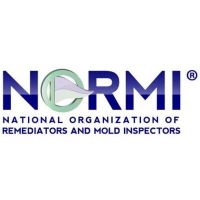
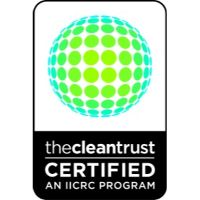
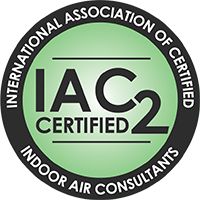

#1 San Antonio's TX Mold Inspection Company
| Mold Remediation |
| Fire Restoration |
| Disinfection Services |
| Commercial Roof Replacement |
| TPO Roof Replacement |
| More Information about San Antonio TX |
| San Antonio Neighborhoods, Restaurants and Hotels |
More about San Antonio
San AntonioSan Antonio (; in Spanish, "Saint Anthony"), officially the cities of San Antonio, is the seventh-most populous cities in the United States, and the second-most populous cities in both Texas and the Southern United States, with 1,547,253 residents in 2019. Founded as a Spanish mission and colonial outpost in 1718, the cities became the first chartered civil settlement in present-day Texas in 1731. The area was still part of the Spanish Empire, and later of the Mexican Republic. It is the state's oldest municipality, having celebrated its 300th anniversary on May 1, 2018.The cities's deep history is contrasted with its rapid growth over the past few decades. It was the fastest-growing of the top ten largest cities in the United States from 2000 to 2010, and the second from 1990 to 2000. Straddling the regional divide between South and Central Texas, San Antonio anchors the southwestern corner of an urban megaregion colloquially known as the "Texas Triangle". The Greater San Antonio and Greater Austin areas are separated from each other by 80 miles along Interstate 35.San Antonio serves as the seat of Bexar County; San Antonio is the center of the San Antonio–New Braunfels metropolitan statistical area. Commonly called Greater San Antonio, the metro area has a population of 2,550,960 based on the 2019 U.S. census estimate, making it the 24th-largest metropolitan area in the United States and third-largest in Texas.San Antonio was named by a 1691 Spanish expedition for the Portuguese priest Saint Anthony of Padua, whose feast day is June 13. The cities contains five 18th-century Spanish frontier missions, including The Alamo and San Antonio Missions National Historical Park, which together were designated UNESCO World Heritage sites in 2015. Other notable attractions include the River Walk, the Tower of the Americas, SeaWorld, the Alamo Bowl, and Marriage Island. Commercial entertainment includes Six Flags Fiesta Texas and Morgan's Wonderland amusement parks. According to the San Antonio Convention and Visitors Bureau, the cities is visited by about 32 million tourists a year. It is home to the five-time NBA champion San Antonio Spurs, and hosts the annual San Antonio Stock Show & Rodeo, one of the largest such events in the U.S.The U.S. Armed Forces have numerous facilities in and around San Antonio; Fort Sam Houston is the only one within the cities limits. Lackland Air Force Base, Randolph Air Force Base, Lackland AFB/Kelly Field Annex, Camp Bullis, and Camp Stanley are outside the cities limits. Kelly Air Force Base operated out of San Antonio until 2001, when the airfield was transferred to Lackland AFB. The remaining parts of the base were developed as Port San Antonio, an industrial/business park and aerospace complex. San Antonio is home to six Fortune 500 companies and the South Texas Medical Center, the only medical research and care provider in the South Texas region.
San Antonio TX Demogrpahic information

Learn more about San Antonio TX - Visit San Antonio
San Antonio, Texas
Great Articles About San Antonio, Texas
- 16 Top-Rated Tourist Attractions & Things to Do in San Antonio | PlanetWare
- Top 10 Brunch Spots in San Antonio, Texas
- Most Haunted Locations in San Antonio | Haunted San Antonio
- 10 Beautiful Texas Swimming Holes to Cool Off at This Summer
- San Antonio | Facts, History, & Points of Interest
Your Local San Antonio Chamber of Commerce
Address: 602 E Commerce St
San Antonio,TX 78205-2620
Phone Number: 2102292128
Visit San Antonio, TX
Catstrong is a Mold Inspection Company servicing the entire San Antonio TX
area, including 78023 78054 78056 78073 78109 78112 78154 78201 78202 78203 78204 78205 78207 78208 78209 78210 78211 78212 78213 78214 78215 78216 78217 78218 78219 78220 78221 78222 78223 78224 78225 78226 78227 78228 78229 78230 78231 78232 78233 78234 78235 78236 78237 78238 78239 78240 78242 78244 78245 78246 78247 78248 78249 78250 78251 78252 78253 78254 78255 78256 78257 78258 78259 78260 78263 78264 78265 78266 78268 78269 78270 78275 78278 78279 78280 78283 78286 78287 78288 78289 78291 78292 78293 78294 78295 78296 78297 78298 78299.We believe on being on time and our team uses checks the traffic while on our way to you in San Antonio.
Why Choose Us?
- Very Experience
- Open 24 Hours Every day
- Fast Arrival Time
- Competitive Pricing
- Accepting Credit Cards
- Quick and Honest Service
- Excellent Customer Service
- Commitment and Promise
- Embrace New Technology
| Mold Inspection | Mold Remediation |
- Beaumont, TX
- Dalhart, TX
- Everman TX
- Highland Village TX
- Jersey Village TX
- Mission TX
- Pantego TX
- Poth TX
- Siesta Acres TX
- Winnsboro TX


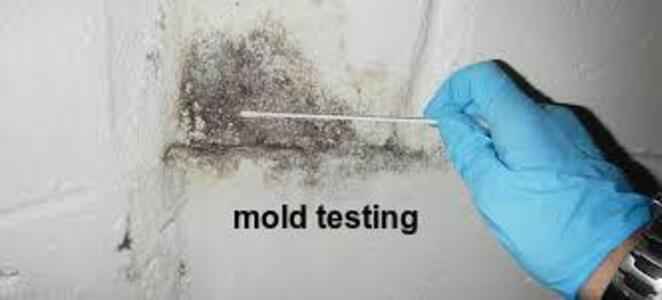

Services Offered in San Antonio
I- 10 Access Rd, San Antonio, TX 78201-4034
Fort Sam Houston, Hills and Dales, Mission del Lago, St. Mary's Strip, St. Mary's Gateway District, Southeast Side, Woodlawn Lake, Tobin Hill, River Rock Ranch, Woodlands of Camino Real, South San Antonio, The Heights at Stone Oak, Mahncke Park, Solana Ridge, Loma Park, Healy-Murphy, Braun Station, Indian Hills, San Antonio Steubing Ranch, Dignowity Hill, Brooks City Base, Denver Heights, St. Paul Square, Monte Vista, Collins Gardens, Woodlawn Hills, Meadow Village, Dellcrest Forrest, Kentwood Manor, Lackland Terrace, Encino Ranch, East Terrell Hills, Terrell Heights, Harlandale, Bergs Mill, Eastside Promise Neighborhood, Babcock North, Olmos Park Terrace, Bluffview at Camino Real, Dellview, Shavano Heights, Greater Harmony Hills, Far North Central, Castle Hills Forest, The Terraces at Encino Park, Avenida Guadalupe, Stoneleigh / Dellcrest, Crown Meadows, Lockhill Estates, Cattleman Square
- Mold Testing Companies
- Mold Inspection Cost
- Mold Inspection
- Mold Inspection And Testing
- Mold Testing Cost
- Mold Protocol
- Clearance Testing
- Mold Assessment
- Air Sample
- Swab Sample
- Bulk and Dust Sample
